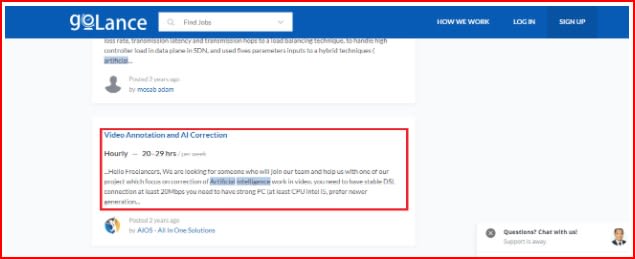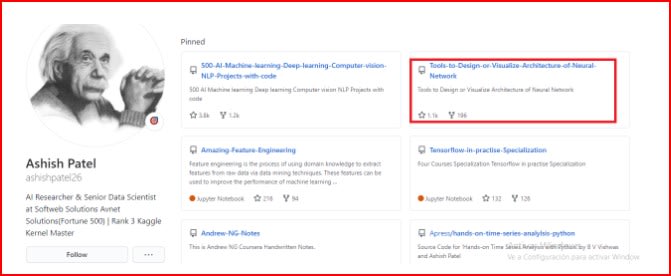How To Become A Freelance Artificial Intelligence Engineer In 2021
In this article, we are going to look at what you should expect as a freelancer in AI and what exactly you need to do the become a freelance AI developer

Do you want to become a freelance artificial intelligence engineer?
Artificial intelligence is a skill that is in very high demand in 2021, and while most people work full-time jobs, you might have thought of the possibility of freelancing as an AI engineer.
Is it even possible to freelance in such a technical field?
Well, while it is very common to hear of freelance web developers, freelancing in artificial intelligence is not a very common term that you’ll hear engineers throw around.
In this article, we are going to look at what you should expect as a freelancer in
AI and what exactly you need to do the become a freelance AI developer. It is part of my main guide on how to get started in AI from scratch. But in this part, we’ll only focus on freelancing with AI.
So let’s get started.
First, before we go any further, are you cut out for freelancing in AI?
Some people might not have heard of the term “freelance researcher”, leave along “freelance artificial intelligence engineer”.
Should you be a freelancer?
In order to clearly explain what you should expect as a freelance artificial intelligence engineer, here are 3 ideas of what it feels like on the inside.
Before I give you an idea of what to expect, here is a very important tip that you have to get from the word go, if you don’t want to be burnt out.
Always charge an hourly rate, and not based on the project.
From my experience, unlike web development projects, it is impossible to know how long an AI project will last i.e. the hours it will take to build. So to say on the safe side, and not have to revise the contract terms in the middle of work, have your hourly rate with you always.
Okay, here are three things to have in mind.
- I’d say that for the vast majority of professionals, freelancing in AI is not the way to go because in order to survive you have to be the kind of person who enjoys freelancing.
- If you really want to succeed you’ve got to be really good at what you do. A client hiring a freelance AI engineer expects you to certainly deliver on the solution. Not try.
- While freelancing in AI, your deadlines tend to be a little more serious than if you are working with a company. So you must have a ton of resources to help you deliver your fist PR within days of starting.
Now, I don’t mean to discourage you.
If fact, if you are cut off for freelancing, this sounds very interesting because there is a certain dose of adrenaline that comes with it.
For more than half of my software engineering career, I have worked as a freelancer, and so I am very well versed with what a freelancer deals with that a corporate employee doesn’t. But working as a freelance engineer is AI is very fun and rewarding.
So now, let’s get to the nuts and bolts of becoming one.
How to become a freelance AI engineer?
Today, there is no shortage of freelancing platforms that will help you jumpstart your career as a freelance artificial intelligence engineer.
In fact, a great place to start looking for the best freelance AI jobs in goLance.

Let’s now look at what you need to do to become a freelance artificial intelligence engineer in 2021 and then make the most of goLance to land your gigs.
1) Learn to code
What will your job be as an artificial intelligence engineer?
To provide business solutions by building applications that mimic human intelligence… and for this, you need skills in a programming language.
A freelance AI engineer is technically a software engineer, even though not in the traditional sense. So the first logical step you want to take when it comes to launching a career in AI is to learn to code.
Now, there are a ton of programming languages out there that you can use to build your AI projects, so how do you know the best one?
If you are completely new to computer programming, then the most logical language to get started with is Python for three reasons:
- Python syntax is very easy to pick up for beginners in programming, so your learning curve will be shorter.
- Python has a lot of AI libraries that you can simply pick and use, so you get to save the time you’d take to develop your own libraries.
- Python has a huge developer community that is also super active. So if you are having problems with your code, you can easily jump into a forum and get answers.
That is not to say that other languages do not have libraries or that they do not have communities. In fact, if you want to know what other languages are available, check out this post on the best programming languages for data scientists to see what other options you have.
Once you have nailed the basics in a programming language of your choice, you are now ready for step two of this guide on how to become a freelance AI engineer.
2) Learn AI
Wait, I thought after learning to code I can just start building AI apps?
No, not exactly.
Artificial intelligence is another subject altogether that you have to study separately, especially the theory part as it will be key when implementing practical projects.
I find that the best way to get started here is to use video tutorials, instead of a book. This is for the very reason that video tutorials are much easier to follow along with. They also teach more up to date technologies than books.
However, it is always a good idea to have some good book by your side for reference.
Now, here you’ll find two kinds of tutorials:
- Theory only AI tutorials. These are the tutorials that you want to start with. Their aim is to teach you all the theory behind artificial intelligence and best practices. But there usually is not practical code along exercise. Soak up as much theory and knowledge as you can. You also want to pick up some algebra, calculus and statistics basics.
- Practice only AI tutorials. Now, these are the opposite of what you had earlier. If you just jump right into the practicals after learning to code, you’ll experience a very steep learning curve. You might even quit AI altogether because of overwhelm. But with a good base from the theory part, you’ll learn step by step how to build and optimize modes.
What I have found very useful is not to try to rush things through too fast.
Artificial intelligence is such a vast and complex field, that an immense amount of effort has to be put up front for you to even build a simple fully functional model.
And the reason most beginners in AI drop out is because they get overwhelmed by this complexity since they try to move too fast.
Once you’ve learnt the theory of AI and built a few code along projects, you are now ready for the next step in this guide.
3) Build a portfolio
As a freelance AI engineer, the one thing that will make or break your career launch is your portfolio of AI projects.
It is completely different from when you are being hired by a big company to come in and work together with their team as you learn.
Your client can’t and won’t pay you to learn on their dollar. They want to be certain that you are the real deal. And how do they do that? By proving that you actually know what you are doing and that you’ve done it before.

So what should you show in your portfolio to convince your clients?
Well, those code along projects from your YouTube tutorials will not help you either. And this is for two reasons:
- Almost everyone has done those same projects. So if you are competing with others you don’t get to stand out. You need to have something better.
- It means you can work on something outside these projects. You were guided by the instructor to build these projects, so you didn’t actually think them through.
The only way to beat these hiccups that classroom projects present is to build your own custom projects.
So you pick a problem and solve it.
Don’t have a project idea? Here are some two problems that you could try to solve, building your portfolio of AI projects in the process:
- Housing pricing prediction in a particular city.
- Stock or share market prediction.
Again, if you read the getting started in AI guide I mentioned above, you’ll find more details on how to go about building your own projects.
But the most important thing is to be gradual about it so that you are not overwhelmed.
For example, start by writing super simple models and progressing to more complex ones as you get comfortable. In addition to that, you need to be resourceful.
What does it mean to be resourceful?
Well, it means knowing how to type your question or challenge in Google, browse through StackOverflow in search of a possible solution to your problem. Most of the time you’ll encounter challenges with your code. Instead of trying to figure it out on your own, why not search for a ready-made answer in Google?
Okay, once you’ve built a couple of projects and mentioned them on your goLance profile, head over to freelance AI jobs on goLance and start your search for a gig.
Why freelance?
I know I should have put this up there but here it is.
Why should you actually consider freelancing in artificial intelligence?
What are some of the advantages that accrue to you, that a full-time AI employee does not get to have or experience?
Well, three things:
- Flexible working hours. As a freelance AI engineer you talk about milestones, so you can decide to put in your hours in the morning, afternoon or night. As long as your client is happy with your deliverables. This also means that if you want to achieve a work-life balance, you just need to arrange your time well.
- Better pay for both part-time and full-time projects. This is almost always guaranteed, as long as you know how to negotiate well. Freelancers and contractors always command higher hourly rates than full-time employees. I would suggest you start from $250/hour upwards.
- Ability to choose what to work on. Wouldn’t it be very interesting to have an AI project in food production if this sector thrills you? Well, as a freelancer in AI you can compare different client projects and choose the one that thrills you the most. Full-time employees don’t get to do this, or they could but to a limited extent.
So you see?
While I started by warning you about freelancing in AI, you can now see that it has a ton of advantages.
Conclusion
I hope this guide on how to become a freelance AI engineer in 2021 has shed light on the particular steps that you need to take if you want to launch a successful career in AI as a freelancer.
Again, while most people working in this field have it as a full-time job, there is a promising crop of freelance AI engineers that’s coming up.
If you thought that you’d earn less than them, this article has provided that you actually get paid the same or even more.
But just reading about guides is not really going to help you launch a successful career in freelance AI development… you have to do the work.
So why not start now by getting some learning materials and getting started?
If you are already an experienced freelancer in AI, what are some of the tips for becoming a freelance AI developer that I missed in this article?
Please share your thoughts in the comments below.
